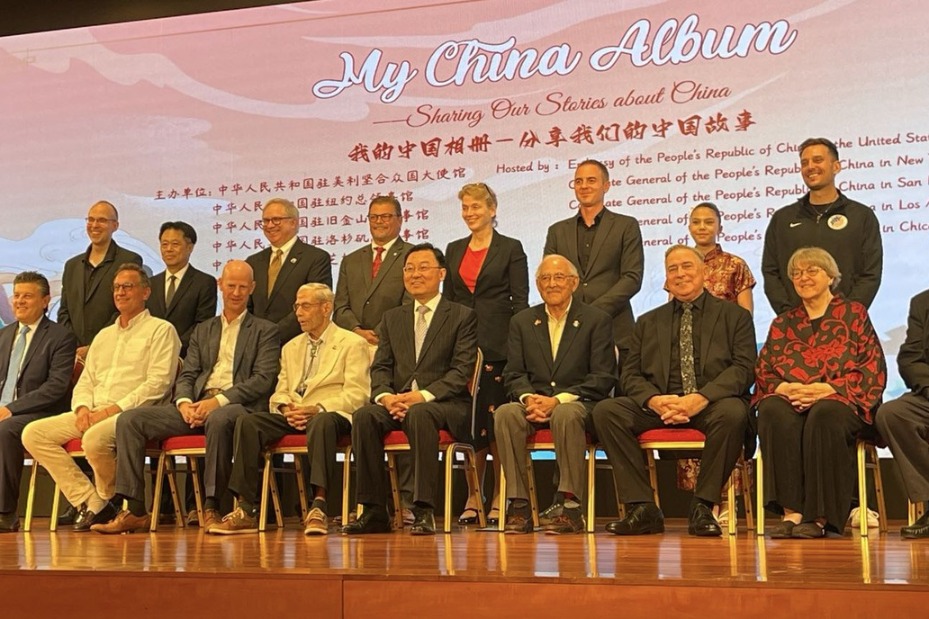Chinese NGO helping Nepal in poverty fight
By YANG HAN in Hong Kong | China Daily Global | Updated: 2020-09-14 09:19
Asian neighbors have ramped up cooperation amid new challenges brought by pandemic

When students at Sarasoti Namuna Secondary School in Janakpur, Nepal, returned to school on Aug 25 for the first time in months amid the nationwide novel coronavirus lockdown, 500 food packages were provided to the students and their families by the China Foundation for Poverty Alleviation's Nepal office and local partner Safa Sunaulo Nepal.
After the massive earthquake in Nepal in 2015, the Chinese foundation, like many other nonprofit organizations, sent a team of volunteers to the South Asian nation to provide assistance in rescue efforts and disaster relief. The foundation, the only Chinese nonprofit organization registered in Nepal, continues to carry out poverty reduction programs today.
With the pandemic forcing the landlocked nation to lock down, the need for poverty alleviation has never been higher.
Despite significant progress in lifting people out of poverty, Nepal needs to roll out different measures to improve people's livelihoods as the pandemic puts the economy at risk, said Pampha Bhusal, former Nepali minister of women, children and social welfare.
"Nepal needs to prepare and implement some special strategies to alleviate poverty in the future," Bhusal said.
China's contribution to Nepal in poverty reduction as a friendly neighbor is highly appreciated, she said, adding that China has cooperated with Nepal in various sectors, including hydropower, education, healthcare and manufacturing.
Recognizing that Nepal needs to continue reducing the number of people living below the poverty line, Bhusal said China's experience and achievement in poverty alleviation can provide valuable lessons.
"China pursued reform and opening-up since 1978 and is now in the race of becoming a world superpower. Nepal should learn from China's achievement in poverty alleviation during this period," she said.
Over the years, Nepal has made huge achievements in poverty alleviation. According to Bhusal, who is a member of Parliament, the population living below the poverty line is only about 18 percent now, compared with almost 45 percent in the 1990s.
The international poverty line is measured by the percentage of inhabitants living on the equivalent of $1.90 or less per day using 2011 prices, according to the World Bank.
In a report in July, the United Nations Development Programme said Nepal is among countries that have made significant strides in reducing multidimensional poverty almost by half over the past one-and-a-half decades.
Inspired by China's experiences, people found the government should play the main role in addressing Nepal's problems in poverty alleviation and tackle the challenges brought by the pandemic, said Bhusal.
She said Nepal's success in poverty alleviation can be attributed mainly to political changes in the early 1990s, as the government has implemented policies and programs aimed at lifting people out of poverty and highlighting employment, income generation and sociopolitical rights.
"The government has enforced policies such as progressive taxation, charging only a minimum amount, or even free in some cases, for public services like education, health, drinking water and electricity," Bhusal said.
Nepal has also been conducting various income-generating activities through the Poverty Alleviation Fund, established by the government in 2003 to help bring down Nepal's poverty level.
Bhusal said that to realize the government's plans and policies for poverty alleviation, collaboration between the public and private sectors as well as development partners is important.
The COVID-19 pandemic has had an adverse impact on the country's economy and caused massive unemployment, Bhusal said. The lockdown enforced to control the outbreak resulted in the closure of factories, businesses and industries until the government loosened the nearly four-month lockdown in late July.
Since the beginning of the COVID-19 outbreak in Nepal, the China Foundation for Poverty Alleviation's office in Nepal has been implementing various programs to target those affected by COVID-19, including setting up hand-washing stations, providing anti-pandemic packages and donating food to students.
"NGOs play a significant role in poverty alleviation in Nepal, especially after the massive earthquake in 2015," said Zou Zhiqiang, country director of the foundation's Nepal office. The foundation has been providing various poverty alleviation programs in Nepal with local partner Safa Sunaulo Nepal.
Zou said more than 20 Chinese NGOs provided emergency help after the earthquake, and the Chinese government pledged 4.7 billion yuan ($688 million) in grants and loans to help the South Asian nation's recovery.
Zou said she hopes to share China's successful experience with Nepal, adding that the biggest achievement has been encouraging capable people to pursue self-development.
The China Foundation for Poverty Alleviation's hepatitis B screening program in Nepal, which was launched after the earthquake, not only sent the message that Nepal was safe for global tourists, but also helped improve the local medical system by training doctors and nurses.
Since the pandemic has created more challenges for poverty reduction, Zou said the foundation is adjusting its programs to help the poor in Nepal get through the difficulties.
As the pandemic forced Nepal's schools to close amid the lockdown, the foundation expanded its Smiling Children program, which provides midday meals to students, to include food packages for the children and their families.
Migrant workers, through remittance payments, are also a major contributor to helping alleviate poverty in Nepal, said Ganesh Gurung, founding chairman of the Nepal Institute of Development Studies.
"Nepal has 5.4 million households, and nearly 60 percent of these households are getting the remittance (from their family members working abroad)," said Gurung.
Nepal's migrant workers sent home $8.1 billion in 2018, according to the World Bank.
Gurung sees remittances put at risk, since the pandemic has forced many overseas Nepalese workers to return home. "The biggest challenge is that these people will be unemployed," he said.
Gurung said the pandemic offers an opportunity for Nepal to replace foreign workers with local employees as its own laborers return and foreigners leave.
Meanwhile, Bhusal, the former Nepali minister of women, children and social welfare, said the skills and expertise of people returning from other countries can be applied in specialized sectors to help promote poverty alleviation.
























